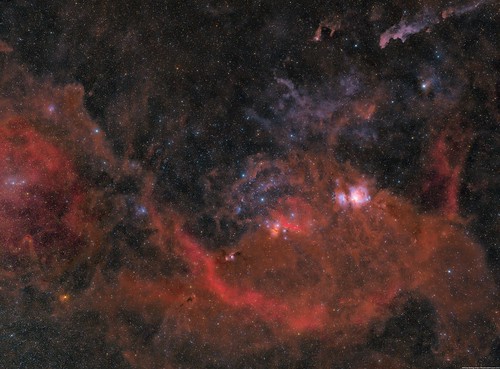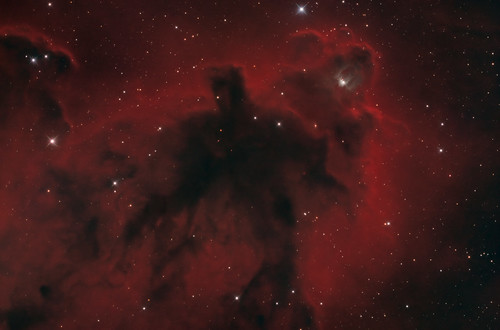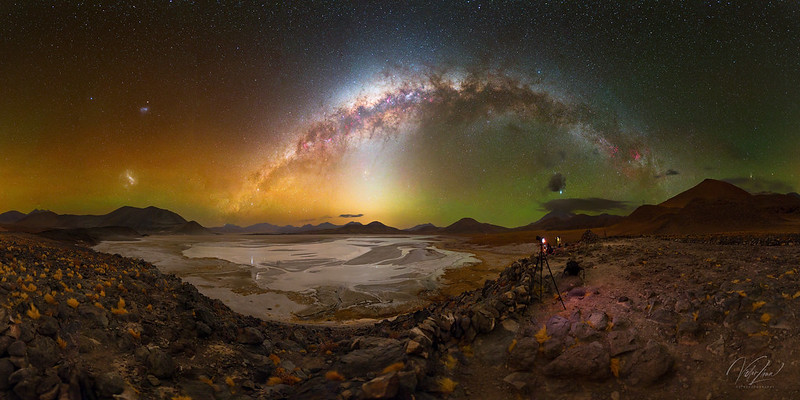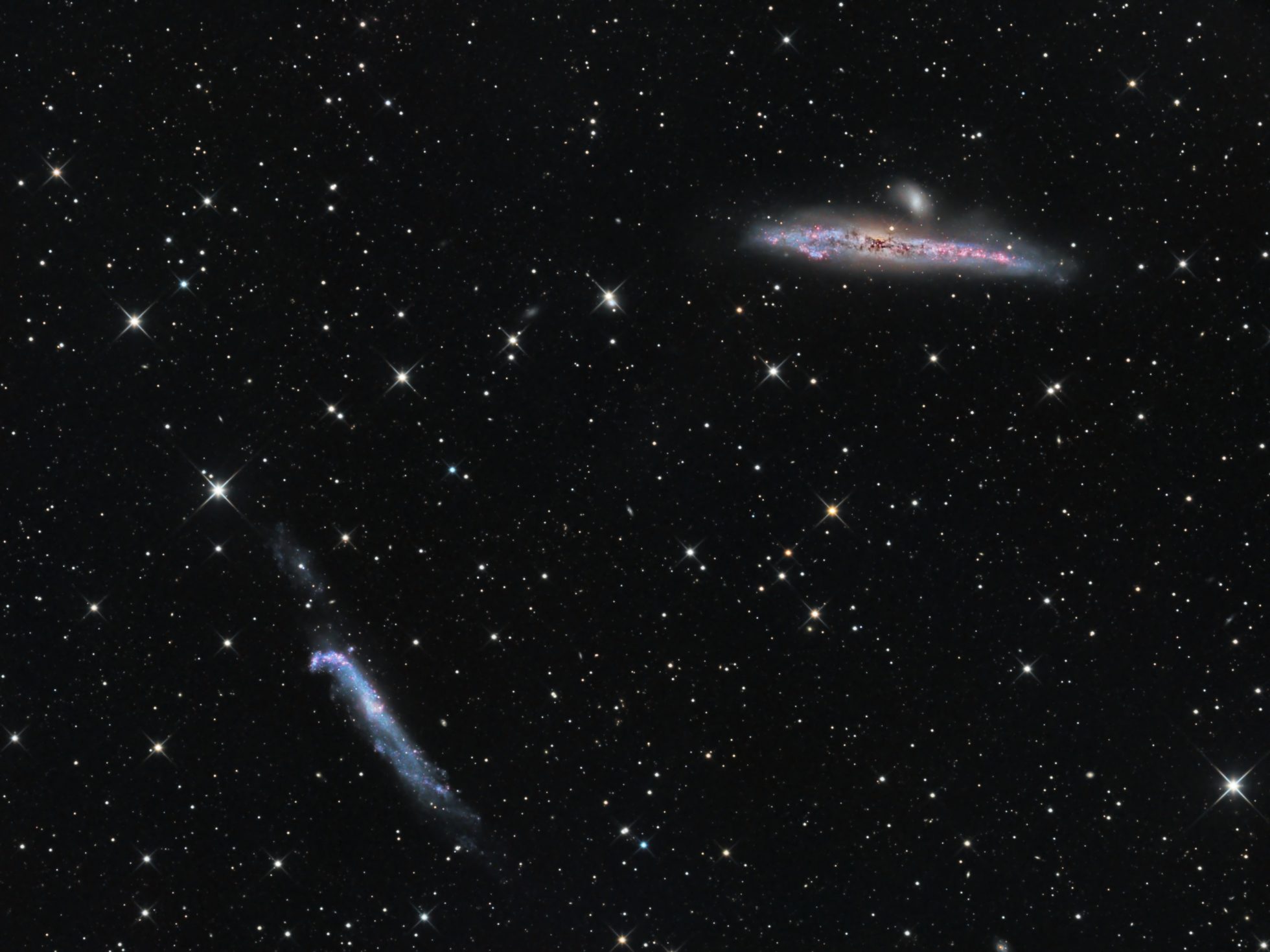https://www.flickr.com/photos/194543639@N07/
https://www.instagram.com/mark_hoffman_photography/
Copyright: Mark Hoffman
 by mark h, on Flickr
by mark h, on Flickr"The Heart Nebula (also known as the Running dog nebula, IC 1805, Sharpless 2-190) is an emission nebula, 7500 light years away from Earth and located in the Perseus Arm of the Galaxy in the constellation Cassiopeia. It was discovered by William Herschel on 3 November 1787. It displays glowing ionized hydrogen gas and darker dust lanes.
The brightest part of the nebula (a knot at its western edge) is separately classified as NGC 896, because it was the first part of the nebula to be discovered. The nebula's intense red output and its morphology are driven by the radiation emanating from a small group of stars near the nebula's center. This open cluster of stars, known as Collinder 26 or Melotte 15, contains a few bright stars nearly 50 times the mass of the Sun, and many more dim stars that are only a fraction of the Sun's mass.
The Heart Nebula is also made up of ionised oxygen and sulfur gasses, responsible for the rich blue and orange colours seen in narrowband images. The shape of the nebula is driven by stellar winds from the hot stars in its core. The nebula also spans almost 2 degrees in the sky, covering an area four times that of the diameter of the full moon."
Equipment/Capture Details:
Williams Optics Z73
EQ35-Pro
ZWO ASI EAF
ZWO ASI 120MM
ZWO ASI 1600MM Pro
ZWO ASI 7 position EFW
Kendrick Dew Heater
Pegasus Pocket Powerbox Mini
36mm Astronomik 6nm Ha, O3, S2 filters
Total Integration Time = 26 hours
Ha Integration Time = 85 * 480sec
O3 Integration Time = 96 * 240sec
S2 Integration Time = 54 * 540sec
Virginia, USA
Bortle 7
NoiseXterminator and deconvolution SHO linear images. LRGB combination in Pixinsight. STF and Histogram stretch. Imagesolver script followed by SPCC. StarXterminator, color masks and range masks with curves, saturation. Photoshop Hue/Saturation/Luminance.












